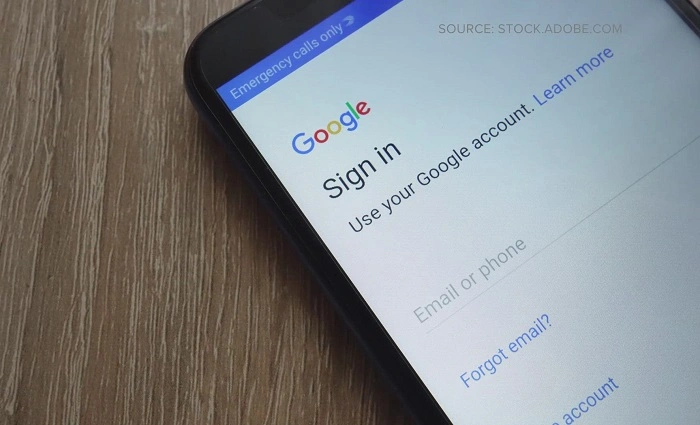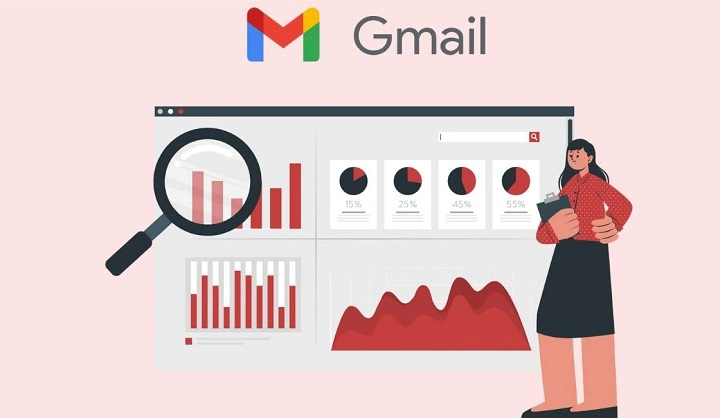Gmail is free — but ever wonder how Google makes money from it? Millions of users use Gmail daily to send business and personal email without spending a dime. And yet, Gmail is one of the planet’s most profitable digital properties.
So, how does Gmail generate revenue without charging users? In this 2025 guide, we’ll break down Gmail’s hidden business model, explore how it connects to Google’s larger ecosystem, and explain the smart strategies that turn free email into a billion-dollar business.
The Core Idea: Gmail Is Free, but You’re Part of the Ecosystem

Gmail is not profitable to begin with. Instead, it is among Google’s huge range of products — Search, YouTube, Drive, Maps, etc. Every single thing you do in Gmail solidifies Google’s grip on your habits, routines, and desires even more.
Those details enable Google to deliver more effective, targeted ads and services — the actual cash cow. Gmail is not a product unto itself; it’s the center of Google’s cloud and ad empire.
Main Revenue Stream 1: Google Ads (Targeted Advertising)
Advertising brings in the most money for Gmail at Google. Although Gmail already ended scanning specific email messages for ads (not since 2017), it already employs signals of data about activity in your account in order to show more relevant ads to other Google products.
How It Works:
Gmail is connected to your Google account.
Google is tracking your general web activity — like YouTube video viewing, searches, or Maps visits.
And using all of that data, you see more targeted ads on other Google websites.
Example:
If you continuously receive travel confirmations or flight newsletters, you will then begin receiving ads about flights or hotels on your Google Search or YouTube.
Gmail allows Google to better target ads, but not by exchanging your data but because Google has visibility into user trends and patterns.
Main Revenue Stream 2: Google Workspace Subscriptions
While regular Gmail is free, businesses and professionals pay for Google Workspace (formerly G Suite).
Google Workspace provides:
Custom Gmail addresses (e.g., [email protected])
More storage in Gmail and Drive
Admin controls and security features
Collaboration tools (Docs, Sheets, Meet, Calendar, etc.)
Subscription plans start at around $6 per person per month, with pricier enterprise plans.
Example:
A company with 20 employees paying $12/month for Workspace generates over $2,800 in revenue for Google — from just one company.
With an estimated tens of millions of businesses using Gmail for business use, Workspace is one of Google’s most consistent and recurring revenue streams.
Revenue Stream 3: Google One Storage Plans
The second method by which Gmail indirectly earns revenue is by way of Google One, the paid storage plan upgrade.
Free Gmail accounts get 15 GB shared across Gmail, Google Drive, and Google Photos. They can purchase more in increments when they reach the limit via Google One.
The plans are as follows:
$1.99/month for 100 GB
$2.99/month for 200 GB
$9.99/month for 2 TB and higher
Most of them promote these plans just to keep the Gmail account open. That is an immense recurring income with millions of such users.
Biggest Revenue Source 4: YouTube, Search, and Cross-Product Integration

Gmail also generates traffic for other revenue-generating Google products via promotion or subscription.
For instance:
Your Gmail login opens YouTube, Maps, and Play Store.
YouTube or Play purchase reminder emails point people to those websites.
Account linking is the way that Google is enabling more relevant advertising across all of its websites.
This kind of cross-platform activity keeps people inside Google’s ecosystem, where impression and time spent — both of which are monetizable — increase.
Revenue Source 5: Data Analysis and AI Training
Gmail doesn’t sell your information off, but it does feed anonymized aggregate data that is utilized to prepare Google’s AI and machine learning models.
These models power:
Smart Compose and Smart Reply (Gmail’s AI features)
Spam filtering and phishing detection
Ad targeting models for Google Ads
Natural language processing models used throughout other Google services
With its AI research, Google minimizes the cost of operations, enhances ad performance, and enhances user experience — all indirectly resulting in higher profits.
Revenue Stream 6: Business Partnerships and App Integrations
Gmail’s (via Google Workspace Marketplace) open API provides third-party developers with the potential to integrate tools like project management software, CRM tools, and security tools.
Example:
A company can integrate Trello or Zoom add-ons in Gmail.
Those third-party applications even pay Google for marketplace exposure or API exposure.
It’s a different revenue stream — not enormous compared to advertising or subscriptions, but significant for ecosystem growth.
Big Revenue Stream 7: Cloud Infrastructure and Business Solutions
There’s Google’s cloud infrastructure behind Gmail — the same infrastructure powering thousands of other companies through Google Cloud Platform (GCP).
When businesses utilize Gmail for business purposes, they also host or analyze via GCP by default. These two services go together, and this synergy encourages Google to pursue corporate customers.
Gmail → Workspace → Cloud → Ads
And there’s the entire revenue synergy chain.
Why Gmail Avoids Breaking Trust and Generating Revenue
Most of Gmail’s popularity is the fact that it generates revenue without breaking user trust.
Most important privacy controls:
Gmail no longer scans the text of individual messages for ads.
Each message is TLS-encrypted in transit.
Data settings control is offered by Google under “Privacy & Personalization.”
Opt-out of ad personalization is offered at any time by the user.
This balance of free service and transparent privacy policy maintains Gmail’s worldwide user base.
Gmail’s Hidden Value: Time and Engagement
Every minute you’re here composing or reading an email is making Google’s ecosystem more robust. It’s not money — it’s use.
Gmail allows Google to:
Keep users logged in longer.
Get rich patterns of product use.
Make smart suggestions in other products (Calendar, Drive, Meet).
Make retention greater — because taking away Gmail is relinquishing that connectedness.
The longer you stay, the more probable that you will look at Google’s ads or shell out money for one of its merchandise.
The Big Picture: Gmail as a Strategic Gateway
Gmail isn’t an inbox — it’s an entrance to Google’s entire digital universe.
You sign in once, and you receive:
Gmail
Google Drive
Google Photos
YouTube
Maps
Calendar
Meet
Each of these products can directly or indirectly make money. Gmail is the key that unlocks all of them.
How Gmail Will Keep Making Money in the Future

Gmail’s money-making possibilities will keep growing in 2025 and beyond through:
AI Integration – Future Gmail writing suggestions, scheduling, and organization with Google Gemini AI.
Premium Features – Premium features like advanced filtering, AI summaries, or business analytics for business users.
Workspace Expansion – More business integrations and tools for businesses.
Cloud Storage Expansion – More demand for Google One subscriptions.
Ad Personalization Improvements – Smarter, respect-for-privacy ads with more ROI.
Gmail is still free but more lucrative to the overall Google ecosystem.
Fast Summary
How Gmail makes money:
Ads: Gmail data improves Google Ads targeting.
Workspace Subscriptions: Businesses pay monthly for premium Gmail and collaboration tools.
Google One: Users buy extra storage after free thresholds are reached.
Cross-Integration: Gmail keeps users active on other money-making Google platforms.
AI & Cloud: Gmail usage habits teach smarter systems and fuel cloud usage.
Gmail doesn’t make money off of you — but your use fuels the broader Google economy.
Frequently Asked Questions (FAQs)
Does Gmail make money off of ads in my email inbox?
No longer. Gmail once showed ads that were tailored to the content of your emails, but Google stopped doing so in 2017.
Does Gmail sell my personal information?
No. Gmail does not sell your information. It only uses collective intelligence to support services.
How does Gmail generate revenue if I don’t click on ads?
Even without clicking, your use contributes to Google’s endeavor at making ad targeting and AI algorithms that drive its ad business more intelligent.
Do I need to pay for Gmail storage?
The first 15 GB is free. Google One can be paid for if additional storage space is required.
What are the largest sources of revenue for Gmail?
Indirect ad revenue and Workspace subs are the largest sources for Gmail.

